Ireland’s favourite 4x4 with 27% of the market in 2016, the Toyota Land Cruiser has been top of the pile for some time now. The current Landcruiser is modern, refined and bigger than ever. Toyota has developed new diesel-engine technology for the Land Cruiser that claims good economy and retains the solid driving features of the previous model.
The new engine at 2.8 litres in capacity is smaller than the one that it replaces. The engine power has dropped from 190bhp to 174bhp, while Toyota claims that the engine torque, the muscle behind its trailer pulling power, has risen to 450Nm, a 25% increase from the older engine.
Toyota is using AdBlue additive in the engine, along with a more efficient combustion process to achieve better fuel economy.
Toyota claims that the new Land Cruiser is more economical. The official rating figures are 13.5km/litre (7.4l/100km or 38mpg), which is 15% better than the previous model. In practice, I found that difficult to achieve, but then I was driving across a wide range of conditions, including pulling a full trailer load.
The new Business Class Land Cruiser comes with the Toyota Touch 2 system and Toyota Touch 2 with Go multimedia, an easy-to-use navigation system and a useful reversing camera included. This model also comes with new technology features for handling, safety and driver guidance, including rear cross traffic alert, blind spot monitor, trailer stability control, pre-collision system and adaptive cruise control.
The new Land Cruiser is available in a number of formats, including short and long wheelbase and the Business version with five seats and the potential to operate with lower €333 commercial road tax.
Prices
Toyota has used the opportunity of the new engine to increase prices, which are almost €1,000 more for the commercial models and €3,500 more for the long wheelbase Business version. That is a hefty price increase, even if you are getting more economy.
The entry price for the Business version is €57,495 or £37,705 in Northern Ireland, including VAT. For business users with a VAT number, the N1 tax status of the vehicle makes it more attractive. The entry level commercial starts at €40,000 including VAT.
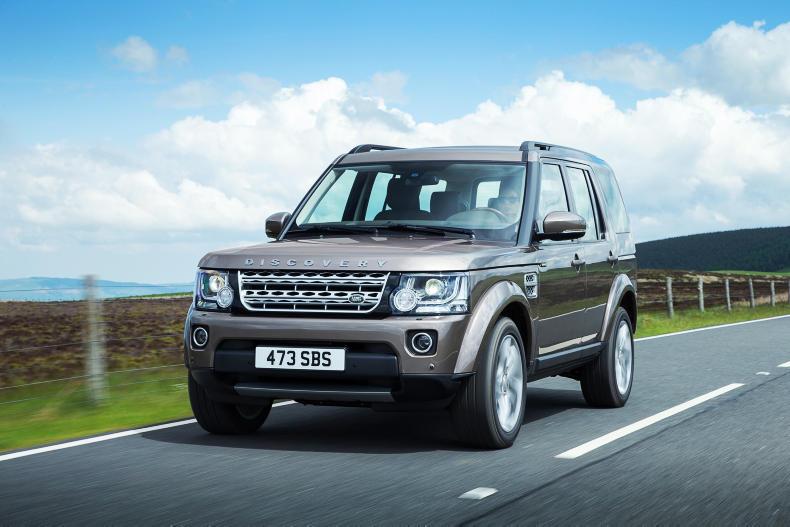
The Land Rover Discovery has received its fifth facelift. Departing from the classic angular design, the new Discovery is now looking more like the sport version. This new model comes as a full-sized, three-row, seven-seat SUV with capability and versatility. It will be available for sale from spring 2017 with expected pricing in Ireland to start from over €60,000. This new model is 480kg lighter than the one it replaces. This helps to reduce the CO2 rating to 189g/km, from 207g/km in the past with the V6 diesel engine.
The new Discovery will be available with two new four-cylinder diesel engine options with two output levels – either 180bhp or 240bhp. The larger power unit uses a twin turbo system.
The V6 diesel is retained and that tops the range at 258bhp, marginally up in power, while torque stays the same at 600Nm.The Discovery importantly retains its 3,500kg towing rating for the bigger power models, dropping to 3,000kg for the entry level model. Land Rover will be offering a semi-autonomous Advanced Tow Assist system for the Discovery to take the stress out of difficult reversing manoeuvres. The new Discovery is marginally longer than the older model and has a longer wheelbase, which should deliver better comfort. This makes the turning circle marginally longer, while the wading depth for those venturing off-road increases marginally with better ground clearance.
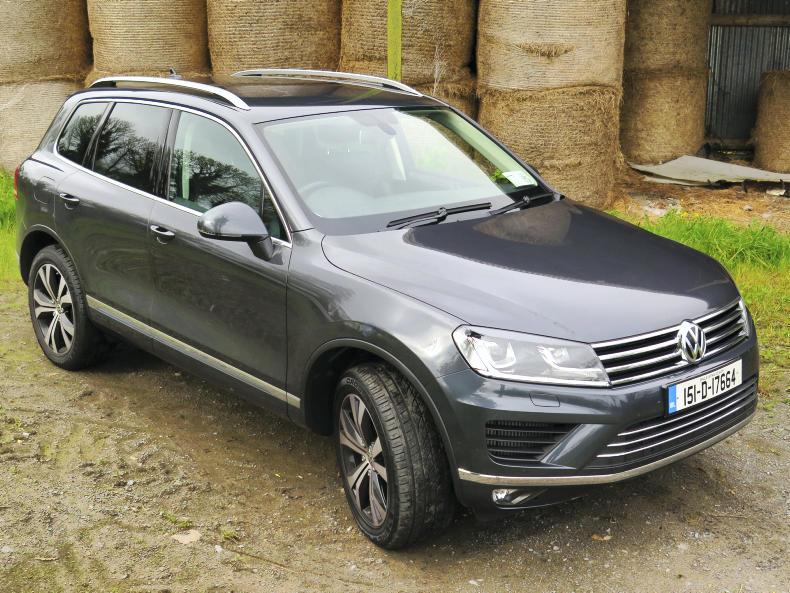
The Touareg is the big mover in the market with a 400% increase in sales in 2016. It’s longer and wider, while the shape, height and overall structure remain unchanged. It has revised bumpers and grilles, new alloy wheel designs, new colours and bi-xenon headlights as standard.
And on the inside, the front seats now come with standard lumbar support.
The Touareg is more economical, according to Volkswagen. The V6 3.0-litre turbo-diesel engine retains the same level of power at 204bhp, while the engine torque has jumped quite a bit to 450Nm. Volkswagen claims that the rated economy improvements have come from a selective catalytic reduction (SCR) unit fitted to the Touareg’s exhaust. AdBlue is used by Volkswagen to reduce the harmful emissions.
All Touaregs now come with the BlueMotion Technology badge that brings battery regeneration during braking and a stop/start function. Volkswagen has added lower rolling resistance Continental Cross Contact 275/45R20 tyres to a more aerodynamic Touareg and claims that it has also helped to reduce the Touareg’s fuel consumption and drop the CO2 emissions from 184g/km to 173g/km.
Four-wheel drive
All new Touareg models are equipped with permanent four-wheel drive. Volkswagen calls this 4MOTION four-wheel drive. With a factory trailer hitch fitted, you get a trailer stabilisation system called Electronic Stability Control (ESC) that is claimed to improve stability when towing by sensing any trailer snaking and then neutralising it. It retains its 3,500kg towing rating and is very smooth to drive with the enhanced eight-speed automatic gearbox.
Entry prices have dropped a little to €70,425 for the passenger version.
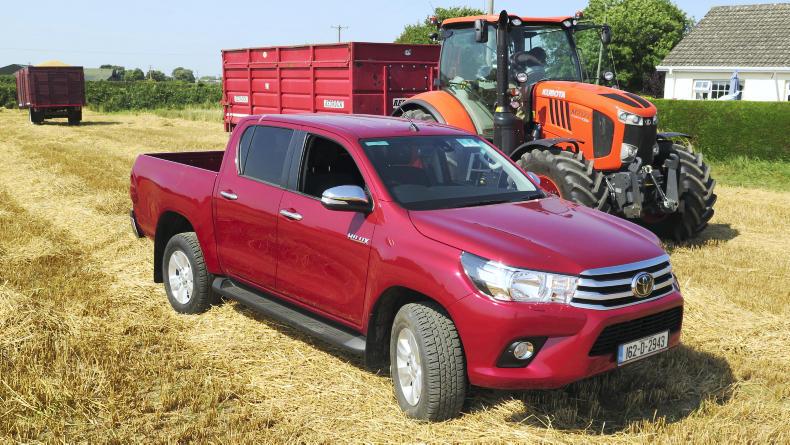
The Toyota Hilux is synonymous with the words tough and durable. Last year, the Japanese manufacturing giant gave the rugged Hilux a more modern and stylish image. Toyota aims to retain the reliability and durability badges while bringing more comfort and great fuel economy.
There is a new global Toyota diesel engine fitted that, while smaller in capacity than the one it replaces, is more powerful in terms of horsepower and significantly so when it comes to torque.
The new four-cylinder turbo-diesel engine uses AdBlue to help reduce CO2 emissions. The filler unit is in the engine compartment; it is a little like an afterthought as the fuel filler cap area has a blanked-out AdBlue filler area. However, the end result is a very smooth drive that’s noticeably more powerful.
The new Hilux comes with a higher towing rating than before, up from 2.8t to 3.2t for the more popular twin-cab version. Toyota has retained the use of leaf springs on the rear suspension and claims these are new and more comfortable than in the past. The company also claims its rear axle unit is a heavy-duty one and, while the towing rating is lower than some of the competition, the durability will be retained.
There are obvious changes in the cabin area. The dash area is completely changed, with a tablet-style touch screen control unit for the heating, radio and mobile phone. The large screen also doubles as the screen for the reversing camera.
The floor lever used to engage 4WD is gone in the new model to be replaced by an electrically operated dial located just to the left of the steering wheel. Engagement of high 4WD is easy and can be done at low speeds. For the low speed 4WD the Hilux must be stopped and you need to wait for the system to fully engage.
The new Hilux load area is higher and wider than before, but a shade shorter. Toyota claims to be using a stronger and heavier-built load area than before, with stronger hinges on the tailgate with an integrated reversing camera. The new Hilux comes with an entry price of €36,500.
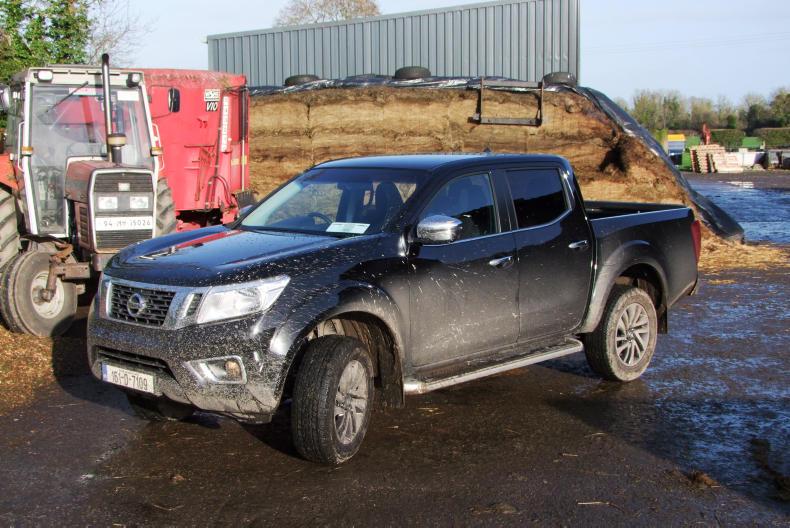
The new Navara has received a comprehensive overhaul. Again this is a popular model with farmers, but wasn’t without its troubles in the mid 2000s. The cabin, the engine and the suspension are all new.
Nissan’s new five-point rear suspension system aims to improve comfort. The system uses a combination of coil springs with anti-roll support bars.
The new Navara is rated to tow 3,500kg. The tow bar is on the extras list and costs €435, including parts, labour and VAT, to have one fitted.
A new Renault-designed 2.3-litre engine replaces the 2.5-litre unit. There are two power options – 190bhp or 160bhp – and that extra power version comes as a result of a twin turbocharger arrangement, while torque is rated at 450Nm. The Navara has a new single-flywheel clutch.
The Navara comes with impressive claims of fuel economy. The rated figure is 15.6km/litre (6.4l/100km or 44mpg) and that’s over 24% more economical than the previous Navara.
Nissan claims to have boosted the ladder-type chassis that underpins the new Navara, to take the extra towing loads. The company aims to provide reassurance to customers by offering a five-year or 160,000km warranty.
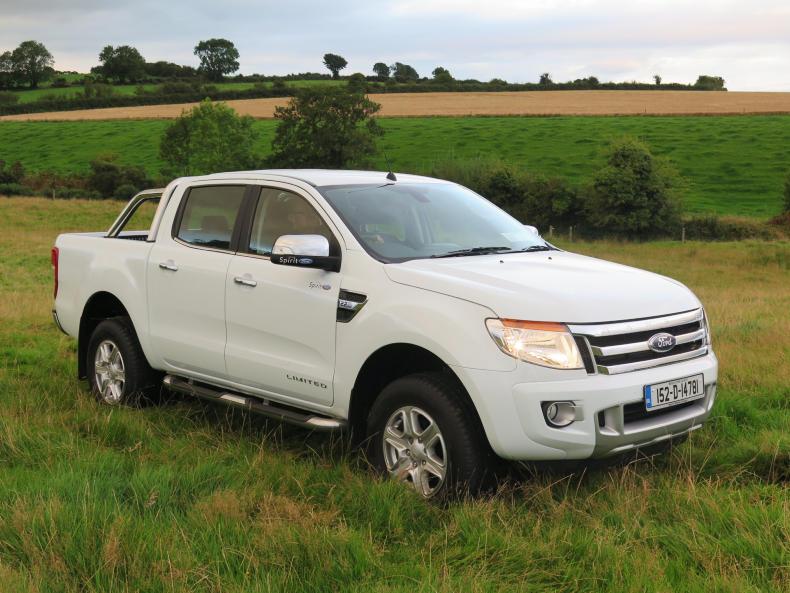
Ford has introduced a tougher and smarter-looking Ranger 4x4 pickup. The new Ranger claims 17% greater fuel efficiency. Entry prices start from €27,395 including VAT.
The 2.2-litre and 3.2-litre engines have been improved, according to Ford. The power output from the 2.2-litre jumps from 125bhp to 130bhp, while the five-cylinder 3.2-litre unit goes from 150bhp to 160bhp. Both six-speed manual and automatic transmissions are available, and customers can select four-wheel drive and two-wheel drive variants. Wildtrak models feature four-wheel drive as standard.
It has a class-leading ability to wade through water up to 800mm deep and has 230mm of ground clearance. The Ranger comes with new technology including Ford’s voice-activated SYNC 2 connectivity system. It has an array of driver assistance technology options including lane-keeping alert and lane-keeping aid, adaptive cruise control with forward alert, front and rear park assist, rear-view camera, and a standard electronic stability control system with rollover mitigation and trailer sway control.
Other technology changes include hill launch assist, which helps drivers confidently start off from a slope, whether in forward or reverse. There is also hill descent control.
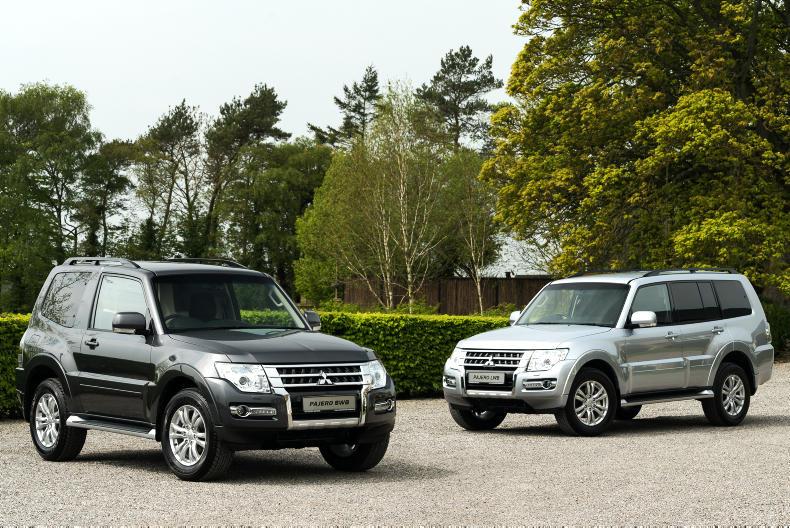
A long-time favourite in Ireland, in the 1990s almost all farmers in the market for a 4x4 drove a Pajero. The Mitsubishi mainstay has also experienced a recent upgrade. It boasts a new impressive interior specification with the highest-ever level of equipment which includes a smooth five-speed automatic gearbox. There is a new Rockford speaker system on board, which includes a large satnav screen that doubles as the viewer for the reversing camera. Leather seating is also standard, along with the reversing camera.
The new Pajero uses the now proven 3.2-litre turbo-diesel engine. The engine power is rated at 200bhp, with more engine torque than most of the competition. You get a lot of 4x4 in terms of capacity and features with the new-generation Executive badge and that includes a 3.5t towing capacity. The Pajero comes with Mitsubishi’s Super Select 4 II transmission which offers four driving modes, 2H rear-wheel drive, 4H full-time four-wheel drive, 4HLc that locks up the centre differential, and 4LLC for extreme low-ratio off-road work.
The overall level of equipment for the current generation Pajero is impressive; it has a 3.5t towing capacity with the entry price of €49,950 including VAT.
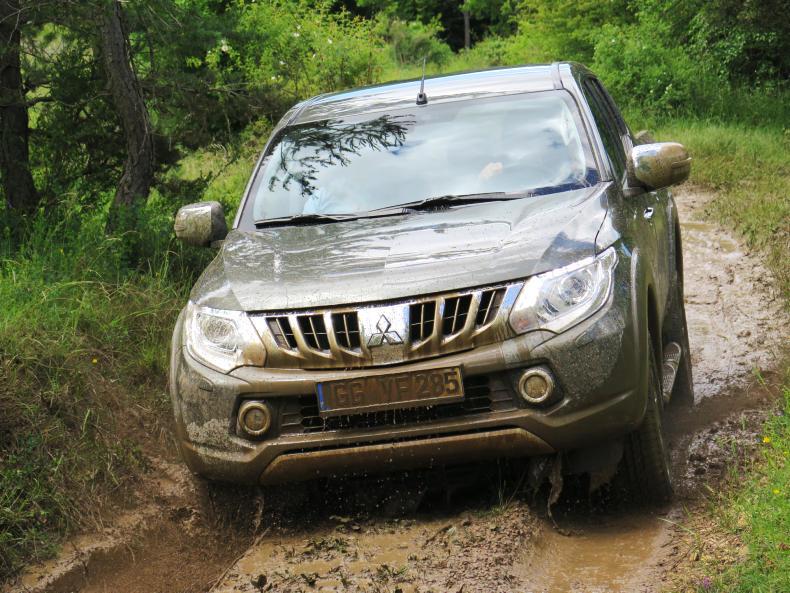
The L200 has been a workhorse in Irish farms down through the years. Last year, Mitsubishi launched the new L200 double-cab 4x4 pickup with new engines and significant improvements in economy.
Mitsubishi says the L200 will set new standards in fuel economy, cutting fuel usage by about 20% compared with the current model, as well as the best of the competition. Mitsubishi has done this through a combination of a new, lighter and more efficient four-cylinder turbo-diesel engine and changes to the L200’s structure.
To shave weight, it is using more high-tensile steel in the new panels. Mitsubishi has replaced the five-speed gearbox with a six-speed unit. A diesel particulate filter (DPF) in place of AdBlue is used to achieve the latest European emission standards in the 2.4l engine.
The pickup area is bigger and the sides are higher to carry a bigger load, although the Mitsubishi specifications show that the payload remains unchanged at 1,045kg. The new L200 has improved towing ability, now rated at 3,100kg.
Entry prices are expected to be about €500 more than the current models, starting at €33,250 including VAT. The standard kit is much better, with reversing camera with sensors, touchscreen audio display, hill start assist, trailer stability assist, and cruise control with speed limiter, dual zone air-conditioning and new 17in alloy wheels.
The new L200 comes with a five-year or 150,000km warranty.
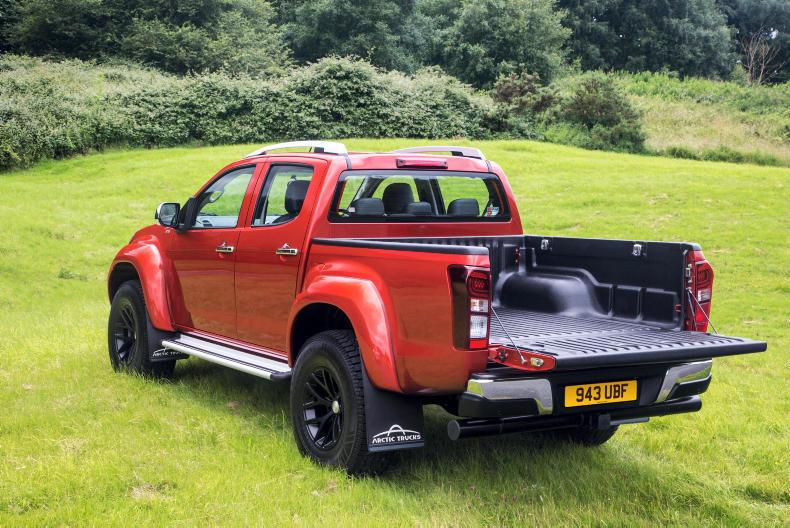
The D-Max is the oldest model in the bunch, with bags of practicality and a fondness developed over the years among the farming community.
Reports from Isuzu Ireland indicate that a totally revamped D-Max is on the way. The new model will see a total change in design and an all-new drive-train.
The current generation of the D-Max is powered by a 2.5-litre twin turbodiesel. The D-Max is a good choice for towing – the 4x4 models can tow up to 3,500kg and can carry a 1,058-1,136kg payload.
It’s available with either a six-speed manual or a five-speed automatic gearbox. The engine develops 163bhp and 400Nm of torque. This figure is good but it lags a little behind some of the competition at the moment.
All D-Max models come with ABS brakes, electronic stability control (ESC) and traction control as standard, which is par for the course in the pick-up market.
There have been no reported problems with the 2.5-litre engine and Isuzu offers a five-year/200,000 km warranty on all models, which give you some idea of how confident the brand is about the D-Max.
The D-Max is priced well and the last of the current model could represent good value at €29,187 including VAT, excluding VRT.
The top-spec Deluxe Auto gives a five-speed automatic transmission with sequential shifting and leather seats come as standard.
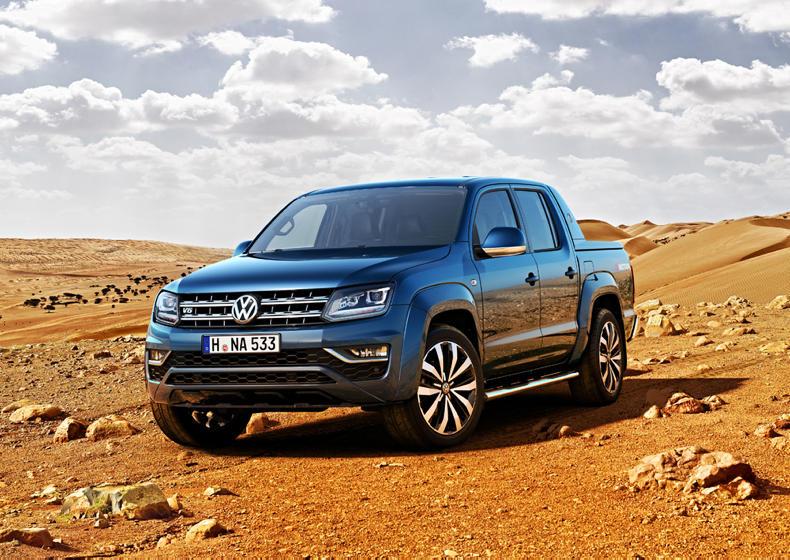
The Amarok is building a loyal following in parts of the country, where it is integrating into everyday farming and family life.
The new 3.0-litre V6 comes with three specification options. The Trendline variant is the entry-level model with a 163hp engine and a price tag of €37,450 including VAT.
Top of the range is the Highline pushing out 224hpand an eight-speed automatic gearbox, coming in with a list price €52,240 including VAT.
The Highline specification includes 18in alloy wheels and front and rear parking sensors with an integrated reversing camera.
From the outside, the looks have improved, with a gloss radiator grille and a partially chrome-plated bumper and mirrors. Tinted LED tail lights are coupled with an LED number. Leather seats come as standard on this model coupled with a tyre pressure monitoring system.
Fitted with four-wheel drive, top-spec models will be capable of pulling 3.5t, up from 3.2t of the existing version, matching the Navara and beating the L200.
VW is now also offering Servotronic variable-ratio steering on the Amarok that supposedly makes it more precise.
Volkswagen offers a comprehensive finance packages for all commercial vehicles.
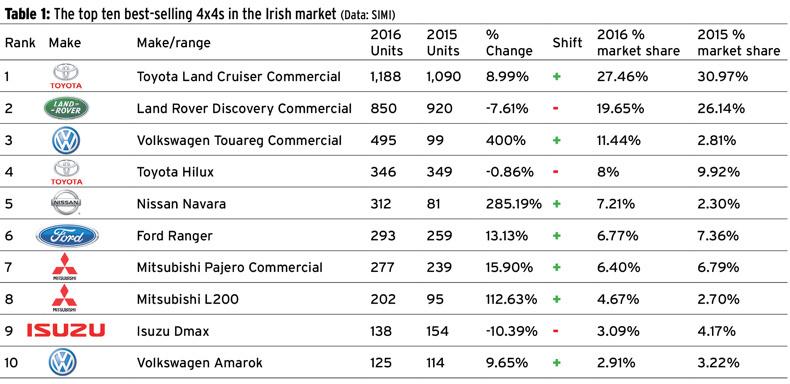

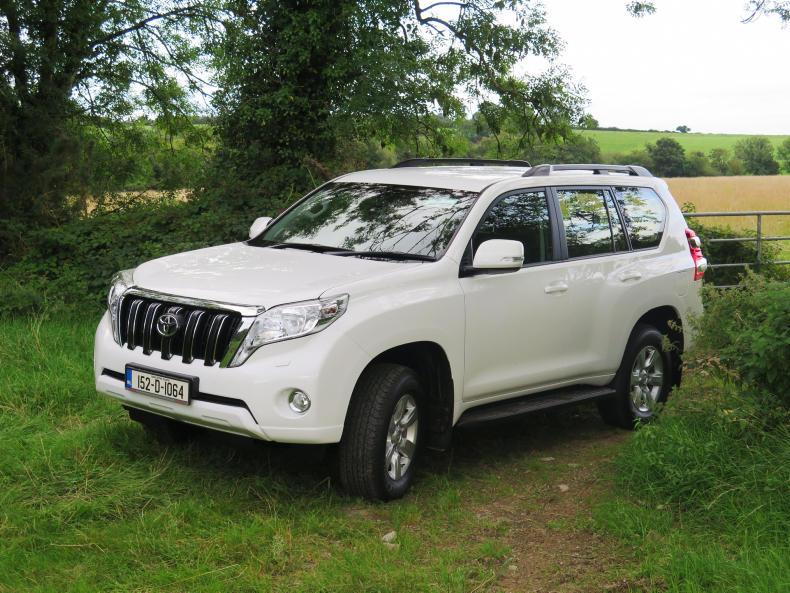




 This is a subscriber-only article
This is a subscriber-only article















SHARING OPTIONS: